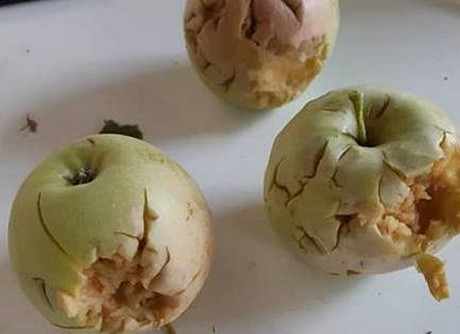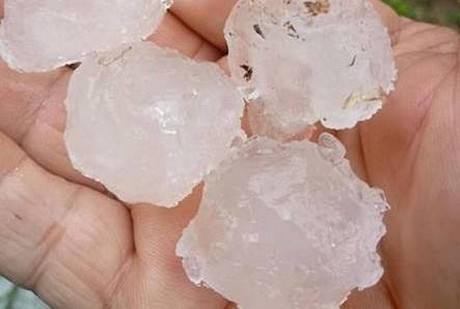The rain then moved on to southern Italy. In the Gargano region in Puglia, a violent hailstorm flooded the fields and streets making the delivery of food and access to crops impossible. Unfortunately the area had already been affected by frost in February and March.
"We've had hailstones as big as eggs. Our producers are reporting severe damage to tomatoes, open-field vegetables and citrus fruit and there are crops that are still inaccessible," reports Coldiretti Foggia President Giuseppe De Filippo. The most critical areas seem to be Rodi Garganico, Sannicandro Garganico, Lesina, Peschici, Vico del Gargano, Cagnano Varano and Carpino.

Hailstorms also affected Romagna on 25th August damaging apples and plums. Heavy rain and hailstones as big as marbles fell between Ravenna and Forlì and late peaches and nectarines were damaged in Faenza.
Granfrutta Zani technician Giuliano Donati confirms that "in some areas, the stones were as big as walnuts. Those who opted for nets have made a good investment this year."

Violent hailstorms also occurred in the eastern and western Taranto province, damaging table and wine grapes as well as vegetable crops.
"Cloudbursts and whirlwinds occurred in the Taranto area causing heavy losses. This campaign will be very difficult," reports a producer.
"The hail and heavy storms damaged table and wine grapes as well as vegetable crops, while the wind damaged facilities and vineyard covers," explains Coldiretti Taranto director Aldo De Sario.
Dozens of hectares of apple orchards, vineyards and buckwheat have been hit by a hailstorm in the Valtellina, Chiuro and Teglio municipalities in Lombardy, while the damage amounts to hundreds of thousands of Euro in Emilia Romagna.
In Sardinia, August has been the wettest on the island since the data started being collected (1922). There have been floods, fruit is damaged by the amount of rainfall and its strength and plants are invaded by fungi.
In Basilicata, industry tomatoes are the worst off, especially in the Palazzo San Gervasio, Banzi, Maschito, Montemilone and Venosa areas.
"We've had hailstones as big as eggs. Our producers are reporting severe damage to tomatoes, open-field vegetables and citrus fruit and there are crops that are still inaccessible," reports Coldiretti Foggia President Giuseppe De Filippo. The most critical areas seem to be Rodi Garganico, Sannicandro Garganico, Lesina, Peschici, Vico del Gargano, Cagnano Varano and Carpino.

Hailstorms also affected Romagna on 25th August damaging apples and plums. Heavy rain and hailstones as big as marbles fell between Ravenna and Forlì and late peaches and nectarines were damaged in Faenza.
Granfrutta Zani technician Giuliano Donati confirms that "in some areas, the stones were as big as walnuts. Those who opted for nets have made a good investment this year."

Violent hailstorms also occurred in the eastern and western Taranto province, damaging table and wine grapes as well as vegetable crops.
"Cloudbursts and whirlwinds occurred in the Taranto area causing heavy losses. This campaign will be very difficult," reports a producer.
"The hail and heavy storms damaged table and wine grapes as well as vegetable crops, while the wind damaged facilities and vineyard covers," explains Coldiretti Taranto director Aldo De Sario.
Dozens of hectares of apple orchards, vineyards and buckwheat have been hit by a hailstorm in the Valtellina, Chiuro and Teglio municipalities in Lombardy, while the damage amounts to hundreds of thousands of Euro in Emilia Romagna.
In Sardinia, August has been the wettest on the island since the data started being collected (1922). There have been floods, fruit is damaged by the amount of rainfall and its strength and plants are invaded by fungi.
In Basilicata, industry tomatoes are the worst off, especially in the Palazzo San Gervasio, Banzi, Maschito, Montemilone and Venosa areas.
Source: www.freshplaza.it





